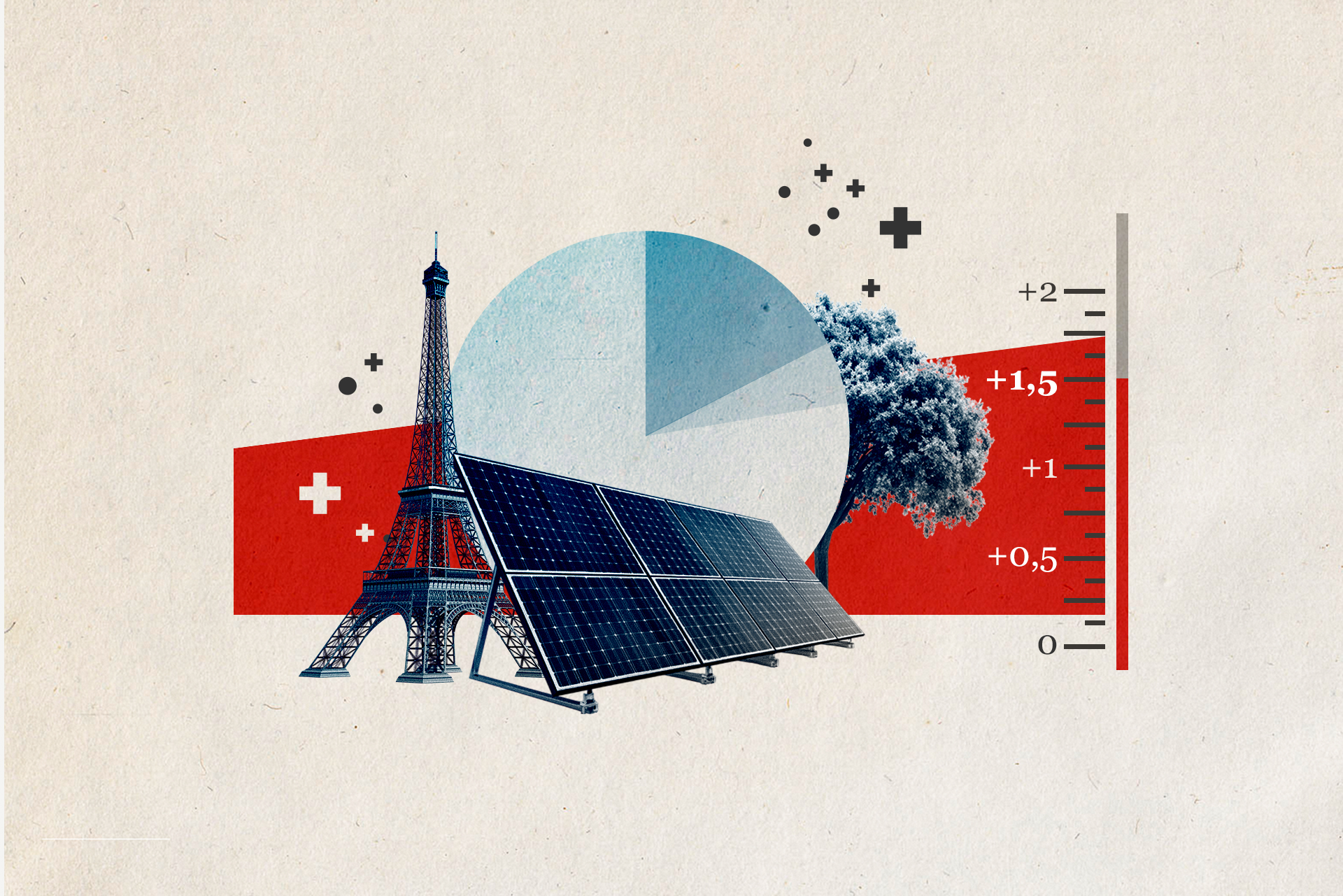
S&P 500 Hits Record High as CPI Locks In Rate Cut: Markets Wrap
(Bloomberg) — Wall Street saw a relief rally as cooler-than-estimated inflation reinforced trader conviction on Federal Reserve interest-rate cuts.
Stocks extended their October advance, with the S&P 500 hitting all-time highs on bets policy easing will power corporate earnings. While the reaction in Treasuries was more subdued, money markets continued to priced in a high likelihood of two Fed reductions before the year is over.
The slowest pace in three months for underlying inflation was a welcome surprise for traders, who’ve been flying almost blind amid the dearth of economic data since the start of the government shutdown. The September core consumer price index increased 0.2% from August. On an annual basis, it rose 3%.
While the central bank was already widely expected to lower borrowing costs at its meeting next week, the CPI report may help convince policymakers that they can do so again in December.
“Good news on a Friday!” said Art Hogan at B. Riley Wealth. “This report will clearly keep the Fed on track to cut rates at its next meeting. The Fed has been clear that they are more focused on the softening labor data and will continue to defend their full employment mandate, even with core CPI well above their 2% target.”
Separate data showed US consumer sentiment fell in October to a five-month low, as worries persisted about stubbornly high prices and the impact on their finances.
The S&P 500 rose almost 1%. Treasury two-year yields fell two basis points to 3.47%. The dollar wavered.
“There was little in today’s benign CPI report to ‘spook’ the Fed and we continue to expect further easing at next week’s Fed meeting,” said Lindsay Rosner at Goldman Sachs Asset Management. “A December rate cut also remains likely with the current data drought providing the Fed with little reason to deviate from the path set out in the dot plot.”
The cooler-than-expected CPI confirms what we’ve seen overall from private data during the government shutdown — little indication that inflation is surging or that the labor market is falling off a cliff, according to Ellen Zentner at Morgan Stanley Wealth Management.
“For a Fed focused on prudent ‘risk management,’ that should translate into another rate cut next week, and likely more to follow,” she said.
To Bret Kenwell at eToro, it would have taken a shockingly bad report to derail an October rate cut, but at a time where economic data is a bit sparse, investors will take any clarity they can get.
Kenwell also noted that while we may in fact get two more rate cuts this year, the Fed will struggle to justify a more aggressive rate-cutting approach in the face of stubbornly high inflation — unless there’s persistent and notable weakness in the labor market.
“Regardless, stocks can do well in a mild inflationary environment, as we have seen over the past few years. For that to continue, we’ll need to see strong earnings, and so far this earnings season, that’s been the case,” he said.
“Much like a Sherlock Holmes’ story, inflation is the dog that didn’t bark,” said Chris Zaccarelli at Northlight Asset Management. “So many people have been expecting a sharp increase in inflation and have positioned bearishly as a result, but the market is likely to keep squeezing the shorts until they realize that the economy – and Corporate America – is more resilient than many expected.”
Zaccarelli also noted that while valuations are high and there are risks in the market, with the Fed cutting rates and corporate profits continuing to increase, it’s hard to see an interruption of this year’s bull market.
“Next year will bring new challenges, but we wouldn’t advise getting in the way of the upward trend between now and year-end,” he said.
“Overall, the inflation figures for September locked in a 25 basis-point cut next week and will likely result in a ‘dovish cut’ tone,” said Ian Lyngen at BMO Capital Markets. “We suspect that a December cut is also cemented by this print given that the government shutdown is an ongoing factor.”
Traders are betting that the Fed will cut the rate by a total of 120 basis points over the next 12 months. That would bring benchmark borrowing costs to 2.9%, below the 3% mark — considered a neutral level that neither stimulates or restricts the economy.
At JPMorgan Chase & Co., Michael Feroli says the case for expecting a cut next week is a simple one: Fed speakers, even some of the more hawkish ones, have done little to push back on the market’s firmly held view that a cut is coming.
Feroli expects the post-meeting statement will be little-changed relative to the September statement. At the press conference, he believes that Chair Jerome Powell will continue to characterize the easing as a risk management move.
“We don’t anticipate he will signal any bias regarding the December meeting; with potentially three months’ worth of data to be released between now and then we see little upside from any signaling that could end up being quite improvident,” he said.
“The data confirms that US inflation remains sticky, but is gradually fading, reinforcing the case for multiple Fed rate cuts into next year,” said Florian Ielpo at Lombard Odier Asset Management.
In fact, while signs of tariff-induced inflation are apparent in select categories such as apparel and furniture, goods prices increased at a slower pace in September than August broadly, according to Josh Jamner at ClearBridge Investments.
“This suggests that the pass-through of higher tariffs to consumers has continued to undershoot expectations, which in turn has opened the door for the Fed to lower rates to support a cooling labor market,” he said.
Jeffrey Roach at LPL Financial noted that while tariffs were likely the culprit for rising apparel prices in September, inflation metrics will likely improve by December, setting the Fed up to continue easing throughout 2026.
“Inflation is staying contained at this point,” said Eric Teal at Comerica Wealth Management. “The impact from tariffs has been felt mostly felt in lower end consumption imports. The tariff effects will probably increase the longer they remain in place. However, the current inflation report combined with a weaker job market provides cover for additional rate cuts in 2025 and into next year.”
More Comments on CPI:
Scott Helfstein at Global X: Nothing in the inflation print should stop the Fed from cutting rates next week. Yes, prices are higher, but not enough to keep them from helping the economy.
The delayed inflation report was not great, but not bad enough to stop the Fed from cutting. Prices have been reasonably stable outside utilities and used cars despite tariffs. US consumers do not like higher prices, but are still eating out.
John Kerschner at Janus Henderson: Today’s numbers help the Fed’s narrative that at least inflation is mostly moving in the right direction. Right now, the markets are seemingly giving the Fed a pass to cut rates through the end of 2025.
Steve Wyett at BOK Financial: When the markets are hungry for data, any tidbit might look like fine dining. Such is the case as we awaited the delayed CPI report to consider what, if any impact it might have on the Fed’s decision next week. The expectation is for the Fed to cut rates, so it would take a material upside surprise to alter course.
The Fed will cut next week and in a welcome development, we have seen longer term rates, including home mortgage rates, decline of late. The bigger picture remains a question, but inflation will not stand in the way of the Fed at the moment.
Skyler Weinand at Regan Capital: Inflation coming in weaker-than-expected further solidifies a continuation of the Federal Reserve’s rate cutting cycle, at least for the next two meetings. We expect at least two 25 basis point cuts to end 2025 and for the Fed to take a slight pause to review a few months of data before cutting again in 2026.
Market sentiment was also helped by a White House announcement that President Donald Trump will meet his Chinese counterpart Xi Jinping, a chance for cooler heads to prevail after a recent flare-up in trade tensions.
Other trade conflicts continue to simmer, however. Trump said he would immediately halt all trade negotiations with Canada, citing a Canadian advertisement against his signature tariffs plan featuring the voice of former President Ronald Reagan.
Corporate Highlights:
Intel Corp. returned to profitability and gave an upbeat revenue forecast, suggesting that it’s making progress on a long and challenging comeback attempt. Ford Motor Co. signaled it will largely bounce back next year from a devastating fire that hobbled a key supplier to its top-selling F-150 pickup, assuaging fears about the fallout for one of the automaker’s biggest money-makers. Procter & Gamble Co. reported better-than-expected sales for its latest quarter as consumers brushed off price increases and snapped up the company’s Gillette razors and Secret deodorant. Newmont Corp. delivered stronger-than-expected quarterly earnings as the world’s largest gold miner started to reap the benefits of cost-cutting measures at a time of surging prices. JPMorgan Chase & Co. plans to allow institutional clients to use their holdings of Bitcoin and Ether as collateral for loans by the end of the year in a significant deepening of Wall Street’s crypto integration. Deckers Outdoor Corp., the owner of Hoka running shoes and Ugg boots, forecast 2026 revenue that falls short of analyst expectations, reflecting pressured consumer spending. Alaska Air Group Inc. said it’s resolved a significant IT outage, the second in roughly three months, that forced it to cancel hundreds of flights. Will we see more convergence between gaming and finance in the future? Let us know in the latest Markets Pulse survey.
What Bloomberg Strategists say…
“The 3% CPI print has changed little because the market expects inflation to be around this sort of level for a while as the Fed removes its foot from the brakes. In other words, the market anticipates a Fed that’s turning its attention to the labor-market part of its dual mandate.”
— Sebastian Boyd, Macro Strategist, Markets Live. For the full analysis, click here.
Some of the main moves in markets:
Stocks
The S&P 500 rose 0.7% as of 11 a.m. New York time The Nasdaq 100 rose 0.9% The Dow Jones Industrial Average rose 0.8% The Stoxx Europe 600 was little changed The MSCI World Index rose 0.6% Bloomberg Magnificent 7 Total Return Index rose 0.5% The Russell 2000 Index rose 1.3% Currencies
The Bloomberg Dollar Spot Index was little changed The euro was little changed at $1.1625 The British pound fell 0.2% to $1.3299 The Japanese yen fell 0.1% to 152.78 per dollar Cryptocurrencies
Bitcoin rose 0.5% to $110,134.62 Ether rose 1.9% to $3,903.15 Bonds
The yield on 10-year Treasuries was little changed at 3.99% Germany’s 10-year yield advanced five basis points to 2.63% Britain’s 10-year yield was little changed at 4.43% The yield on 2-year Treasuries declined two basis points to 3.47% The yield on 30-year Treasuries was little changed at 4.58% Commodities
West Texas Intermediate crude rose 0.7% to $62.23 a barrel Spot gold fell 0.2% to $4,119.39 an ounce ©2025 Bloomberg L.P.



























